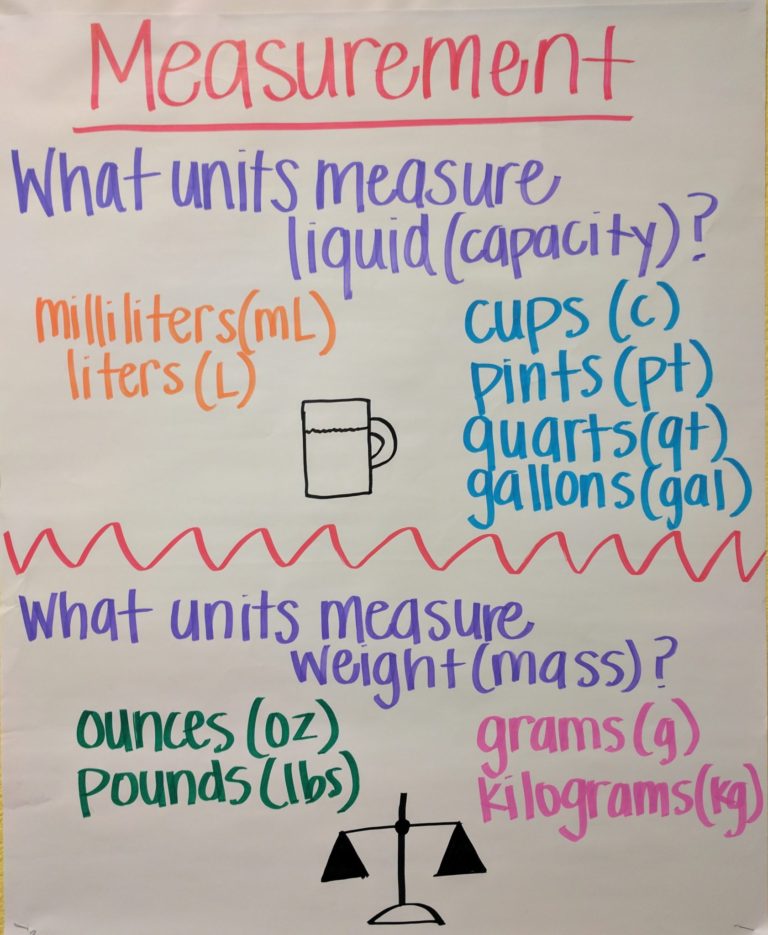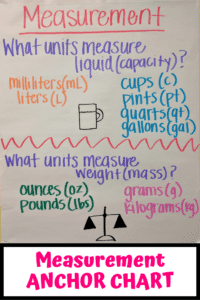Measurement Anchor Chart for Liquid and Weight Third Grade
This post may contain affiliate links, which means I’ll receive a commission if you purchase through my links, at no extra cost to you. Please read full disclosure for more information.
When it comes to teaching measurement to third graders, I think it is one of the easiest concepts for the students to understand. However, each year, my students prove me wrong! We review, I think they are doing great, and then when they are tested, they don’t do well. I have spent many hours trying to figure out what the problem is. Turns out, it is just the units themselves! So, of course, I created a measurement anchor chart poster to help with this.
If I give the students the option between a unit for measuring liquid and another unit for measuring liquid, they can easily give me an answer. However, if I stick in a unit for measuring weight or length, they automatically choose those. Why? Because they have not yet categorized the units in their minds.
Create a Measurement Anchor Chart
This is the anchor chart I created on my own and put on the wall in my classroom. It wasn’t a class contribution, but instead, a visual reminder as to which units are used to measure what.

The questions I ask on this visual reminder are:
What units measure liquid or capacity?
Milliliters, liters, cups, pints, quarts, and gallons.
What units measure weight or mass?
Ounces, pounds, grams, and kilograms.
Has it Helped the Students Remember Units of Measurement?
Believe it or not, this simple anchor chart made a huge difference in my classroom. As I have mentioned in previous posts, I see the kids turning to look at the poster to double-check their answers. It is even better when I see them looking at the blank wall during state testing!
Anchor charts can make a world of difference with the students or even just one kid. Make sure to keep in mind that many of our students are visual learners. You can tell them that gallons measure capacity, however, unless they see it, they won’t quite grasp it.
If you like this specific measurement anchor chart, make sure to check out my top 10 anchor charts post. What do your anchor charts look like? Do they help in your classroom?

